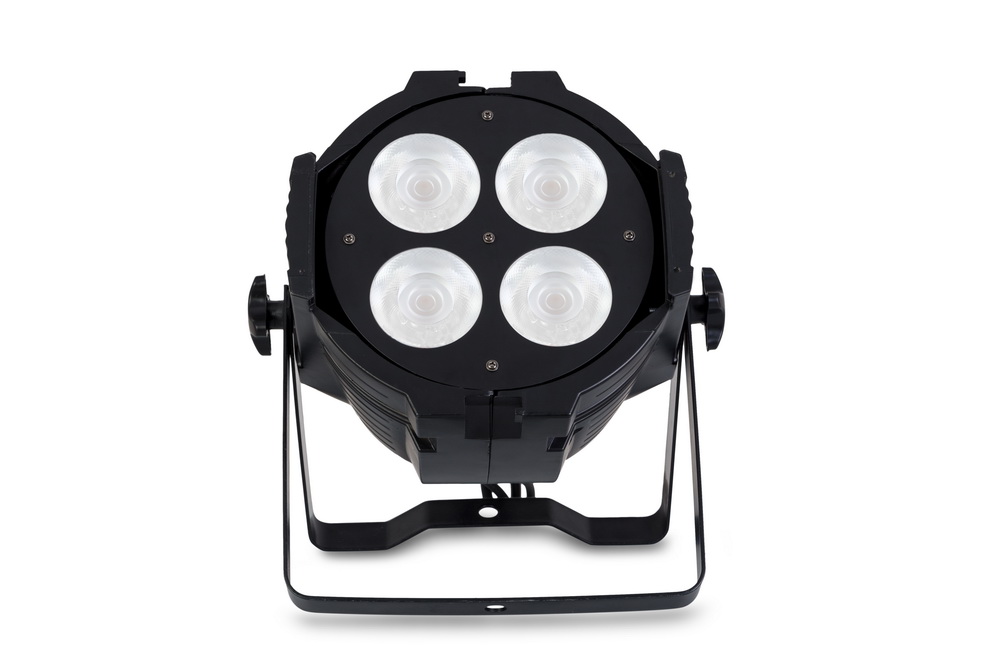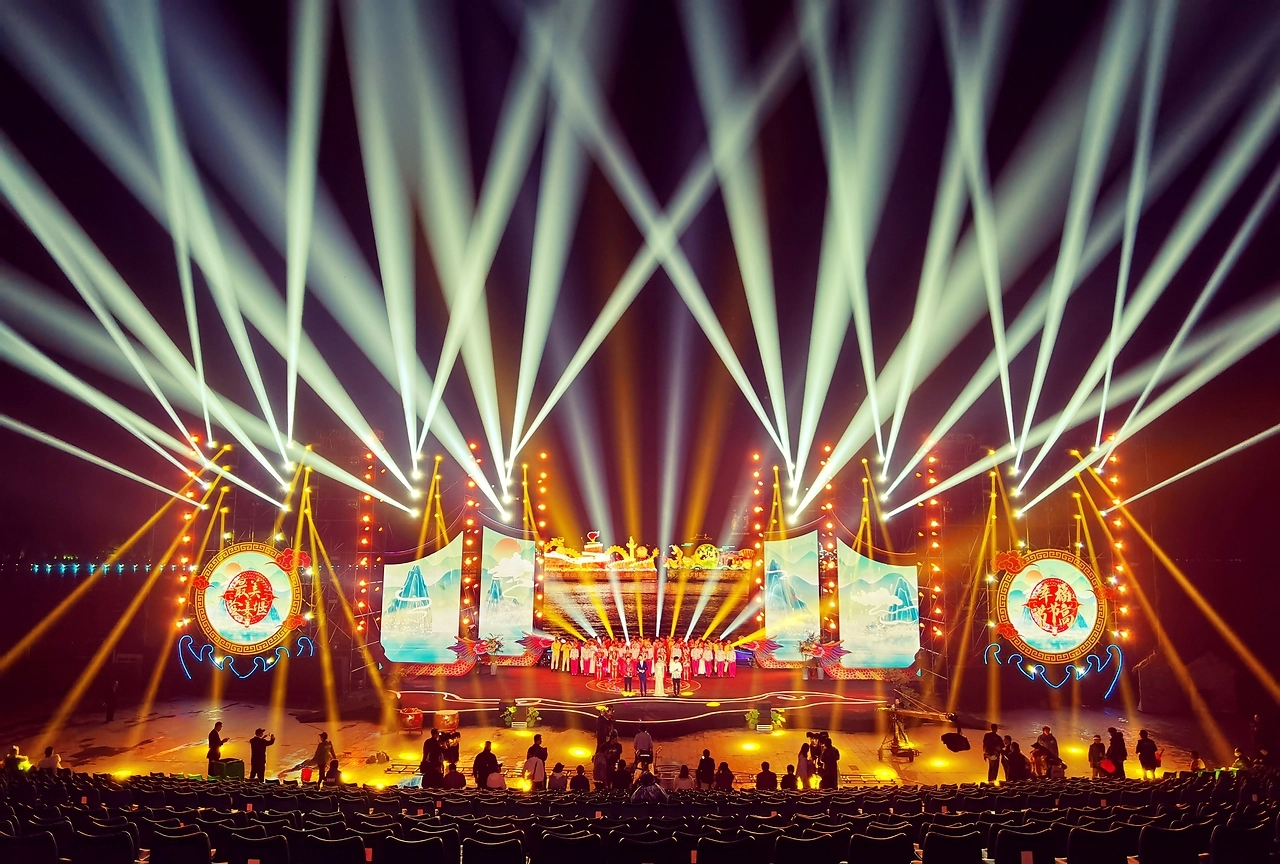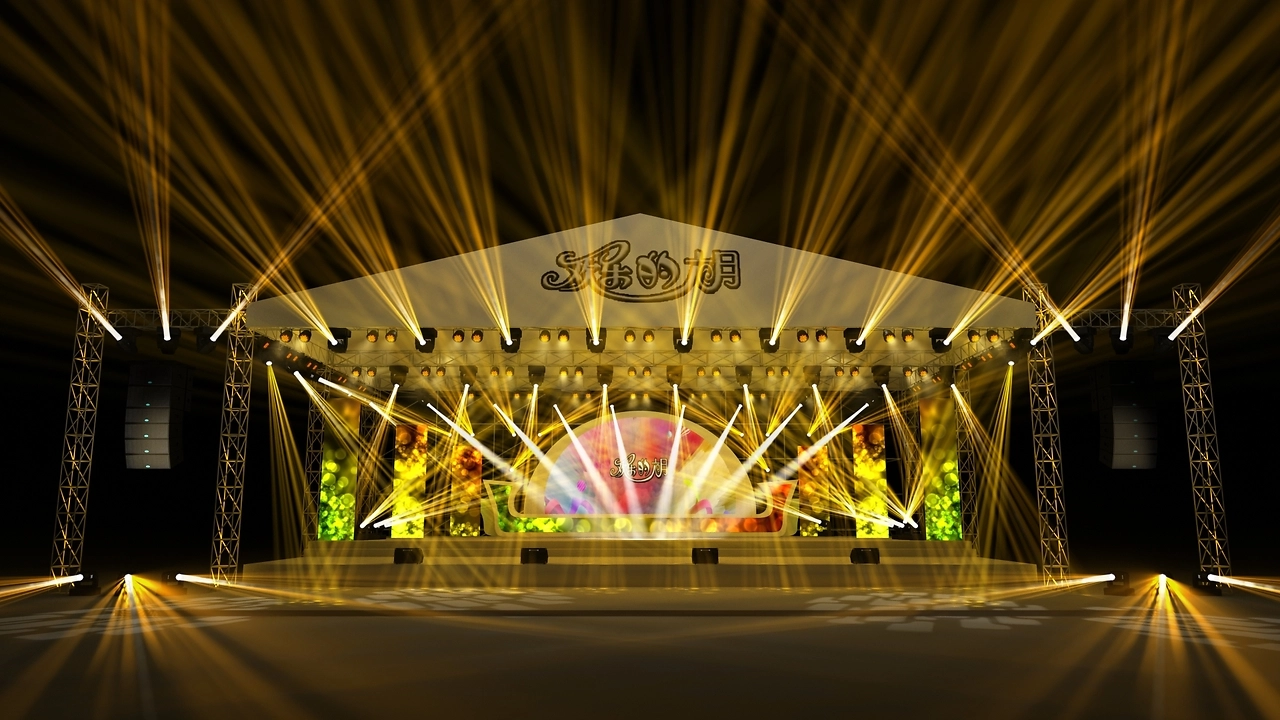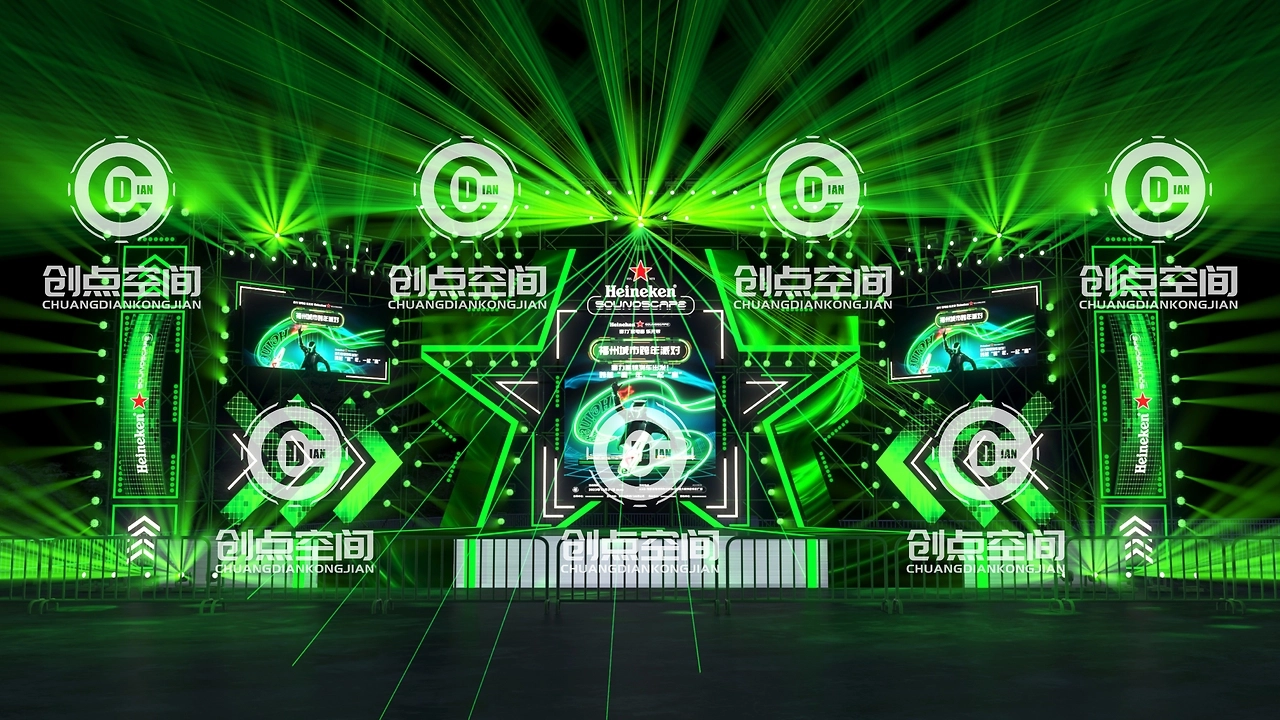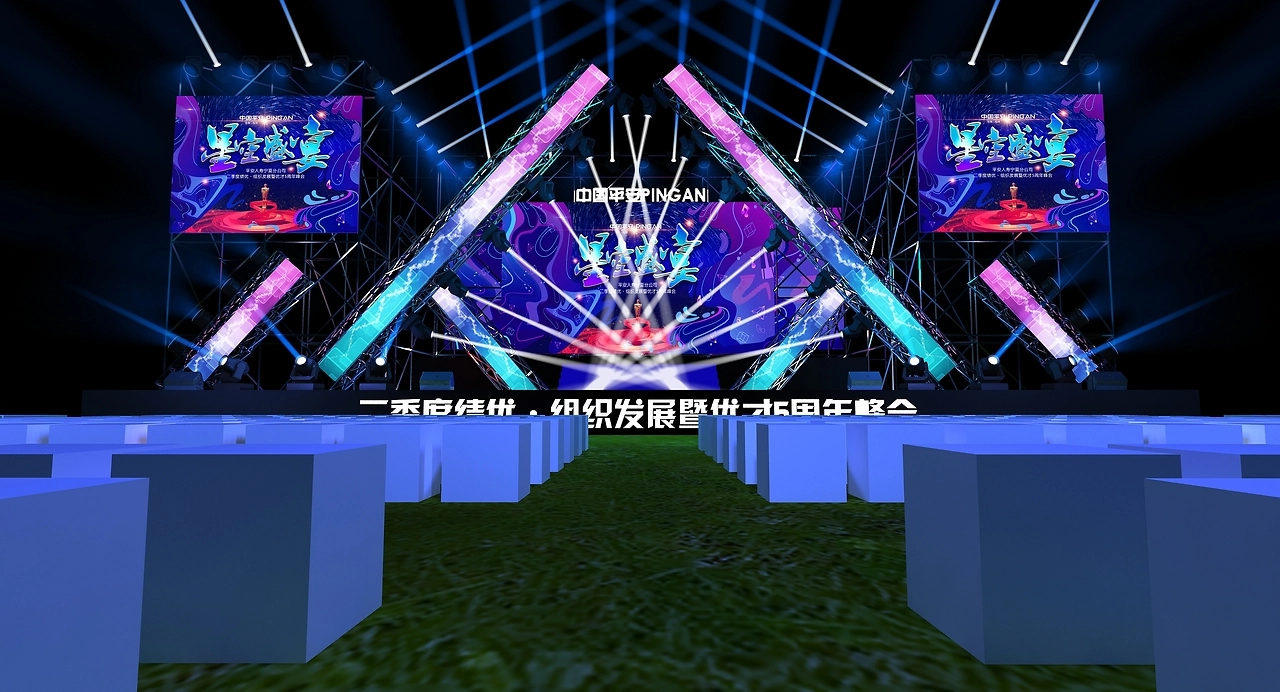**Stage Lighting Equipment: A Symphony of Technology and Art**
Stage lighting equipment is one of the core elements of live performances, film and television production, and large-scale events. It is not only a technical tool, but also an extension of artistic expression. With the advancement of technology, modern stage lighting has evolved from simple lighting tools to complex systems that integrate intelligent control, dynamic effects, and immersive experiences. This article will explore the classification, technological innovation, and application of stage lighting equipment in different scenarios.
---
1. Classification of Stage Lighting Equipment**
1. * * Basic lighting fixtures**
-PAR lamp (parabolic aluminum reflector lamp): commonly used for basic lighting, with uniform light and suitable for creating an overall atmosphere.
-LED lighting fixtures: energy-saving and efficient, supporting RGB color mixing, can quickly switch colors and brightness, becoming the mainstream choice for modern stages.
2. * * Dynamic effect lighting fixtures**
-Moving Head: Equipped with multi axis rotation function, it can project patterns, beams, and color changes, suitable for dynamic scenes such as concerts and music festivals.
-Laser Light: Creating dazzling geometric shapes and text through high-precision laser beams, commonly used in stage design with a strong sense of technology.
3. * * Special Effects Equipment**
-Followespot: Manually or automatically track actors to highlight the protagonist or key plot points.
-Mist machine and bubble machine: Combining lighting to create special effects such as smoke and bubbles, enhancing visual depth.
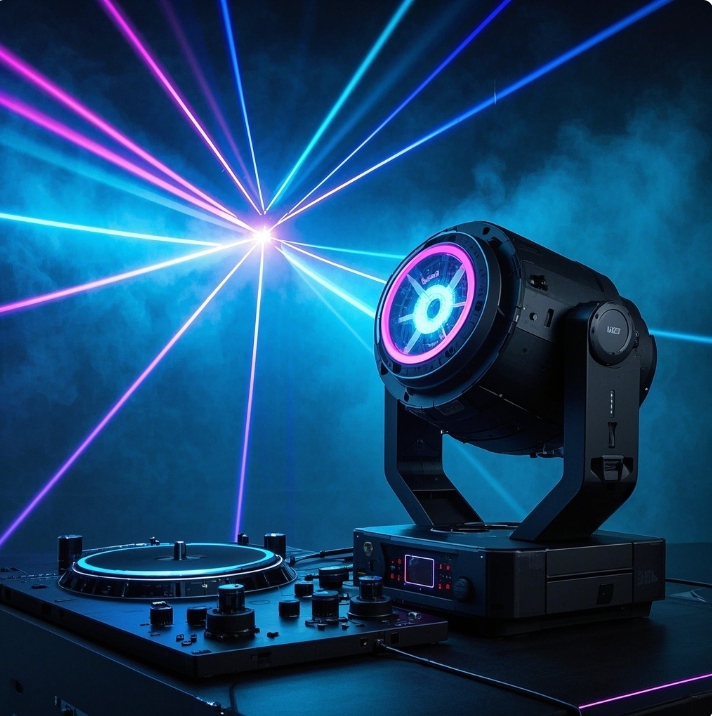
.
---
2. Technological Innovation Promotes Stage Revolution**
1. * * Intelligent control system**
-DMX512 protocol: a standardized control protocol that can simultaneously control hundreds of lighting fixtures, achieving precise synchronization of lighting, color, and motion.
-Visual programming software (such as MA Lighting, Hog 4): Design lighting scenes through a graphical interface, support real-time editing and storage, and greatly improve efficiency.
2. * * Automation and Internet of Things (IoT)**
-Modern lighting fixtures are equipped with built-in sensors and wireless modules, supporting remote control and fault diagnosis.
-5G technology enables ultra-low latency transmission, seamlessly linking lighting with music and video.
3. Environmental Protection and Energy Conservation Trends**
-LED technology replaces traditional halogen lamps, reduces energy consumption by more than 70%, and has a lifespan of up to 50000 hours.
-Solar power supply systems are beginning to be applied to outdoor stages to reduce carbon emissions.
---
3. Diversification of application scenarios**
1. * * Live performance**
-Concerts and music festivals: Enhance audience immersion by matching dynamic lighting with music rhythm.
-Theater and Opera: Utilizing soft color gradients and precise fixed-point lighting to assist narrative and emotional expression.
2. * * Film and television shooting**
-Movies and TV shows use high color rendering index (CRI>90) lighting fixtures to ensure the authenticity of the colors in the picture.
-In virtual production, LED background walls are combined with lighting systems to achieve real-time virtual scene rendering.
3. * * Business and Public Activities**
-Brand launch event: Customized lighting design to enhance the brand's visual image (such as dynamic beams at car booths).
-Art exhibition: Interactive lighting installation combined with sensors, making the audience a part of "light and shadow creation".
---
4. Future Trends: From Tools to Experiences**
1. Immersive technology integration**
-Combining 3D projection mapping with lighting to create a "dynamic canvas" on building surfaces or stage backgrounds.
-Holographic lighting technology is gradually becoming popular, achieving the coexistence of virtual characters and real stages.
2. AI driven lighting design**
-Artificial intelligence algorithms can analyze scripts or music and automatically generate suitable lighting schemes.
-Machine learning optimizes energy allocation and adjusts lighting intensity based on audience distribution.
3. * * Sustainable Innovation**
-The proportion of lamps made from recyclable materials has increased, and modular design has extended the life cycle of equipment.
---
* * Conclusion**
Stage lighting equipment has moved from behind the scenes support to the forefront of artistic expression, becoming a bridge connecting technology, art, and emotion. In the future, with the deep integration of intelligence, environmental protection, and immersive technology, stage lighting will continue to break through the boundaries of imagination, bringing audiences a more stunning sensory experience. Whether it's a traditional theater or a virtual stage in the metaverse, the lighting equipment is always the "invisible director" silently writing the script for every visual feast.
Whatsapp:+86 134 1860 8878

 .
.
